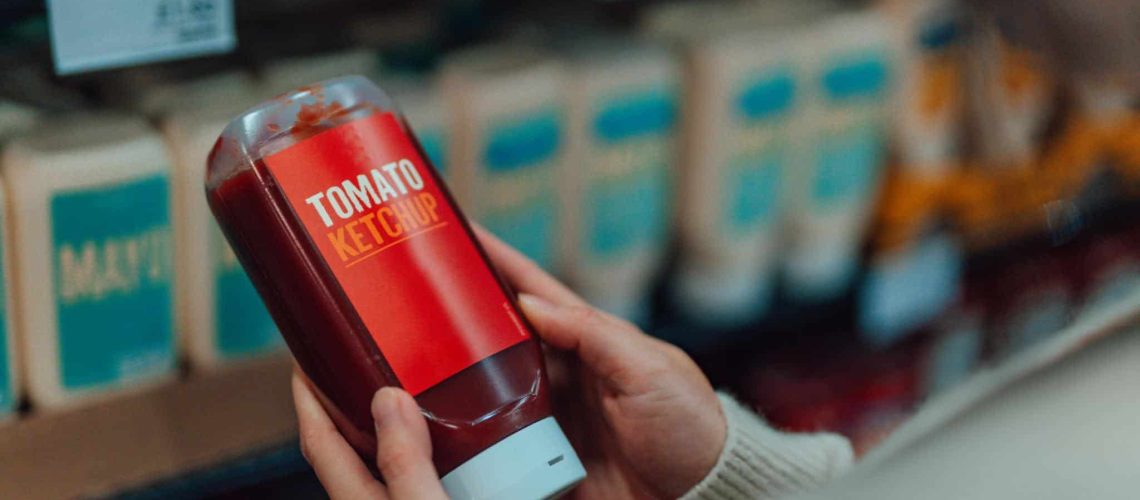Imagine you’re strolling down the aisle of your local grocery store, eyeing the countless condiment choices. What’s the first thing that grabs your attention? It’s likely the labels—those small but mighty pieces of packaging that tell a story, convey information, and persuade us to pop something into our carts. Eye-catching condiment labels are not just about aesthetics; they play a significant role in shelf appeal, drawing consumers towards a particular product. In a sea of competition, these labels help products stand out and entice customers with their unique charm and appeal.
Creating an impactful condiment label goes beyond merely sticking a brand name onto a jar or bottle. It’s about crafting a visual narrative that resonates with potential buyers. This process involves a careful balance of design, information, and innovation. Let’s explore the key elements that contribute to designing attractive condiment labels that make products irresistible on the shelves.
Designing Attractive Condiment Labels
Aesthetic appeal plays a central role in designing a label that stands out. Getting the colour and design right can make all the difference. Vibrant colours, when used thoughtfully, can captivate a customer’s eye and communicate a brand’s personality. For instance, earthy tones could suggest an organic and wholesome product, while bright shades might be chosen to convey fun and excitement.
– Use of Colour: Opt for colours that reflect the product and brand identity. Harmonizing the product’s natural colour with the label’s palette can create an attractive appearance.
– Design Elements: Consider bold but simple designs that highlight the product. Intricate designs may look pretty but can sometimes distract from important details.
Readable fonts are just as important as colour in label design. Customers should be able to quickly glean information from a glance. Avoid overly decorative fonts that might be hard to read, especially in dimly lit store aisles. Instead, clear and straightforward fonts work best. The goal is for potential buyers to effortlessly absorb the essential details while being captivated by the design.
Make sure to keep the label’s design consistent with the product’s image and target audience. A gourmet brand might go with a classic and elegant style, while a family-friendly sauce could benefit from a more playful and vibrant design. By focusing on these design elements, brands can craft condiment labels that are not only attractive but also effective in communicating the product’s story.
Key Elements for Informative Labels
While appealing design draws a customer in, it’s the information on the label that seals the deal. A clear, informative label provides essential details that consumers want to know before making a purchase. First, list all necessary product information such as the product name, weight, and brand. This basic data helps customers identify the product and its size quickly.
Next, focus on key ingredients and nutritional facts. Today’s shoppers are more conscious about what they consume, and having a clear list of ingredients along with nutritional information can influence purchasing decisions. Highlight any unique or special ingredients that make your product stand out, like locally sourced honey or organic spices. This small detail could be a deciding factor for a health-conscious customer.
Here’s a quick checklist for informative labels:
– Display the product name prominently.
– Include the net weight of the product.
– List all ingredients in descending order by weight.
– Provide nutritional facts, including calories and fat content.
– Highlight any allergens or warnings that consumers should be aware of.
Enhancing Labels with Technology
Technology is reshaping how consumers interact with products, and condiment labels can benefit significantly from these advancements. QR codes serve as a great tool to provide customers with additional product information without cluttering the label. A quick scan can direct the user to a website where they can learn more about the product’s origins, receive cooking tips, or even explore other products offered by the brand. This approach keeps the label clean while offering an expanded story.
Augmented reality (AR) is another exciting avenue. Imagine a customer pointing their phone at a label and seeing a virtual chef giving recipe suggestions for the condiment. This engaging interaction not only entertains but also educates, potentially building a stronger connection between the customer and the product.
Printing Quality and Durability
A stunning label does little good if it fades or peels shortly after hitting the shelves. Ensuring high-quality printing is key to maintaining the label’s appearance over time. Look into durable materials that can withstand handling, sunlight, and even moisture. For condiments, which might be stored in refrigerators or outdoor settings, durability is as important as the design. By investing in quality materials and printing techniques, brands can ensure their labels remain attractive and informative, supporting long-term shelf appeal.
Ready to make your product’s packaging stand out in the store aisles? Creative condiment labels are your gateway to capturing the interest of shoppers through thoughtful design and smart content. By incorporating innovative elements like QR codes and augmented reality, you can turn a simple label into a powerful brand story. Learn how to craft standout condiment labels with Fortis Solutions Group and boost your product’s shelf appeal today.
